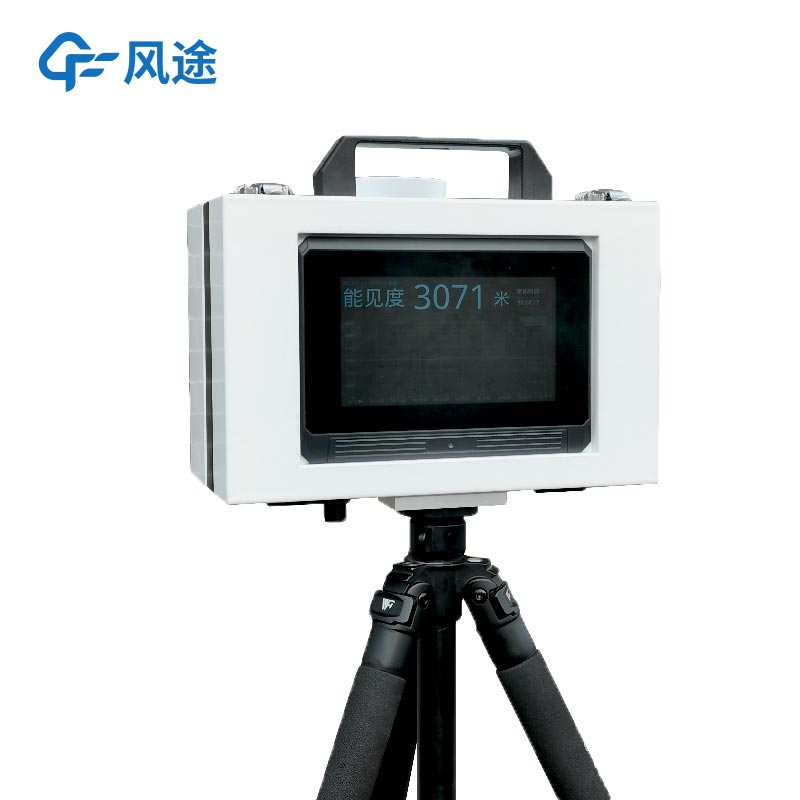Shandong Fengtu IOT Technology Co., Ltd
Sales Manager:Ms. Emily Wang
Cel,Whatsapp,Wechat:+86 15898932201
Email:info@fengtutec.com
Add:No. 155 Optoelectronic Industry Accelerator, Gaoxin District, Weifang, Shandong, China

Sales Manager:Ms. Emily Wang
Cel,Whatsapp,Wechat:+86 15898932201
Email:info@fengtutec.com
Add:No. 155 Optoelectronic Industry Accelerator, Gaoxin District, Weifang, Shandong, China
time:2025-10-22 09:40:17 source:Weather Station viewed:108 time
The FT-BN20 Portable Visibility Detector is a precision instrument designed using the forward scattering principle, which automatically calculates current visibility values by measuring the total air extinction coefficient. With a maximum range of 20 kilometers, this device meets the precise visibility monitoring needs across multiple fields.
The instrument is designed based on the QX/T 536-2020 industry standard and directly measures atmospheric extinction coefficients through the forward scattering method. Its optical system receives light signals scattered by aerosol particles at specific angles, and combines algorithm models to convert real-time data into accurate visibility values. This measurement method effectively avoids the limitations of traditional transmissometers that rely on long baseline sites.
Product Advantages
The entire device weighs no more than 10 kg and adopts an integrated structure. With compact dimensions of 300×150×220 mm and a built-in 6.6AH lithium battery, it can operate continuously for over 12 hours, making it suitable for field mobile monitoring tasks.
Equipped with a 10.1-inch high-brightness touch screen that displays real-time monitoring data and historical curves. A built-in 8GB memory card automatically records measurement results, supporting data query and export functions.
The aluminum alloy housing achieves IP65 protection rating, featuring waterproof and dustproof properties. With an operating temperature range of -20℃ to 60℃ and humidity adaptation range of 0-100%RH, it can withstand various harsh weather conditions.
Communication and power interfaces are integrated with lightning protection design, and a built-in watchdog circuit ensures long-term stable operation of the device. The 24V DC power supply system consumes less than 10 watts, supporting long-term continuous monitoring.
Measurement error does not exceed ±2% within 2 kilometers, is controlled within ±5% in the 2-10 kilometer range, and remains within ±10% in the maximum range segment. Measurement repeatability error is no greater than 4%.
The FT-BN20 Portable Visibility Detector is suitable for real-time visibility monitoring on highways, airports, and ports, as well as meteorological station data collection and emergency meteorological services. It can also be used for environmental assessment at disaster sites, emergency rescue command support, atmospheric particulate matter concentration research, climate change observation, and other environmental scientific research tasks.

Atmospheric visibility has a significant impact on traffic safety. Adverse weather conditions such as dense fog, thick mist, sandstorms, heavy rain, snowstorms, and smoke pollution often reduce atmospheric visibility, posing great challenges to safe operations. Statistics show that approximately 25%...
Drizzle is a precipitation phenomenon characterized by fine and gentle raindrops with a relatively small precipitation amount. The monitoring of rainfall is mainly achieved by measuring the precipitation amount per unit area within a unit of time.Meteorologically, the precipitation amount is usually...
The visibility detector can quickly transmit accurate fog information to the command center by monitoring the changes in visibility on expressways in real time, providing crucial basis for the decision-making of the traffic management department and completely changing the extensive management mode...
The Portable Weather Station is a high-precision comprehensive ground observation device with mobile characteristics. It is portable, quick to install, and boasts high observation accuracy, thus being widely used in the field of meteorological monitoring.This device can accurately measure multiple b...